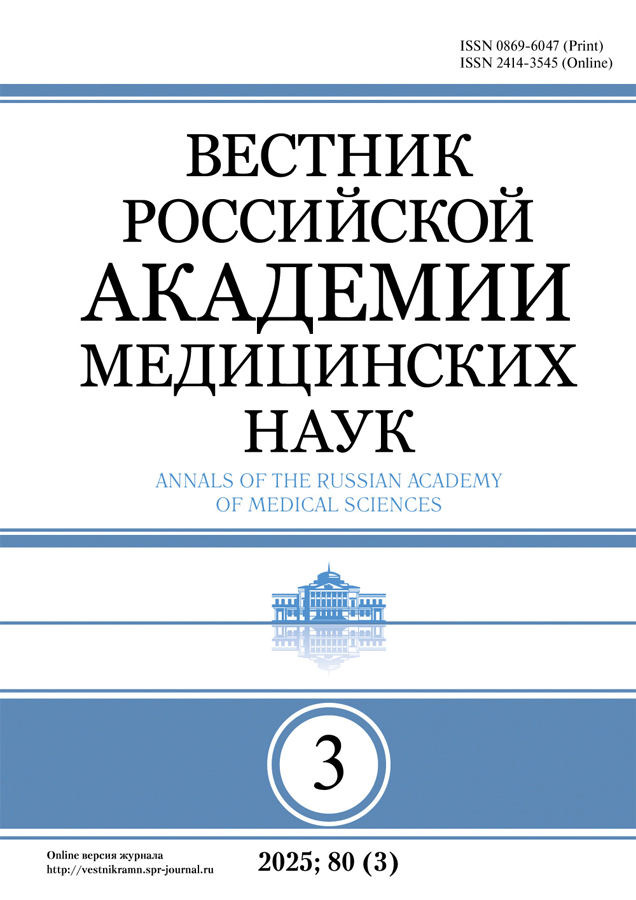CHARACTERISTICS OF THE СOURSE OF MAXILLARY SINUSITIS IN CHILDREN WITH VERIFIED CHLAMYDIA INFECTION
- Authors: Kapustina T.A.1, Belova E.V.1
-
Affiliations:
- Medical Scientific Research Institute for Northern Problems of the Siberian Branch of RAMS, Krasnoyarsk, Russian Federation
- Issue: Vol 68, No 10 (2013)
- Pages: 22-25
- Section: PEDIATRICS: CURRENT ISSUES
- Published:
- URL: https://vestnikramn.spr-journal.ru/jour/article/view/134
- DOI: https://doi.org/10.15690/vramn.v68i10.783
- ID: 134
Cite item
Full Text
Abstract
Aim. To explore the detection rate of chlamydia infection and immunological features of children with acute maxillary sinusitis. Patients and methods. Сlinical epidemiologic characteristics of the course of acute maxillary sinusitis were studied in the way of medical examination provided for 58 children in the ages from 3 to 15 years, patients of ENT department. In order to identify Chlamydia structures and specific antibodies we used direct (polymerase-chain reaction, direct immune fluorescence) and indirect (immune enzyme analysis) methods. The research for cellular link of immunity was carried out by indirect immune fluorescence technique, using monoclonal antibodies. Results. The authors report on high level of Chlamydia infection in epithelium of nasal mucosa, and also type structure of verified Chlamydia, clinical signs and peculiarities of immune response in children with acute maxillary sinusitis associated with this infection. Conclusions: Chlamydia was detected in 48 % of children with acute maxillary sinusitis infection with prevalence of Chlamydophila pneumoniae. Optimal for detection of chlamydia infection is a disease duration not exceeding 2 weeks. The special features of clinical and immunological manifestations in children with acute sinusitis, paired with Chlamydia infection are the more frequent complaints of pain in the affected sinuses, expressed symptoms of intoxication, and the presence of an imbalance in cellular immunity , manifested a relative lymphopenia and activation of T-lymphocytes CD8+.
About the authors
T. A. Kapustina
Medical Scientific Research Institute for Northern Problems of the Siberian Branch of RAMS, Krasnoyarsk, Russian Federation
Author for correspondence.
Email: tak34@yandex.ru
PhD, research adviser of the clinical department of pathology of upper respiratory tract of FSBI “Scientific Research Institute of Medical Problems of the North” under the Siberian Branch of RAMS. Address: 3g, Partizana Zheleznyaka St., Krasnoyarsk, 660022, tel.: (3912) 228-06-62 Russian Federation
E. V. Belova
Medical Scientific Research Institute for Northern Problems of the Siberian Branch of RAMS, Krasnoyarsk, Russian Federation
Email: belova.ev@bk.ru
MD, senior research scientist of the clinical department of pathology of upper respiratory tract of FSBI “Scientific Research Institute of Medical Problems of the North” under the Siberian Branch of RAMS. Address: 3g, Partizana Zheleznyaka St., Krasnoyarsk, 660022, tel.: (3912) 228-06-62 Russian Federation
References
- Granitov V.М. Khlamidiozy. [Chlamydia Infections]. Мoscow, Meditsinskaya kniga, 2002. 187 p.
- Gavalov S.М. Khlamidioz – disbakterioz. Integral’nye vzaimootnosheniya. [Chlamydia-Dysbiosis. Integral Correlations]. Novosibirsk, RTF, 2003. 218 p.
- Lobzin Yu.V., Lyashenko Yu.I., Poznyak A.L. Khlamidiinye infektsii. [Chlamydia Infections]. St. Petersburg, Foliant, 2003. 396 p.
- Stephens R.S. Chlamydia. Intracellular biology, pathogenesis and immunity. Washington: ASM Press. 1999. P. 143–146.
- Shaw E., Roberts D., Connor P.D. Prevalence of and risk factors for Chlamydia in a rural pregnant population. Fam. Pract. 1995; 41 (3): 257–260.
- Palchun V.T., Gurov A.V., Chikvin V.Yu. Vestnik otorinolaringologii = Bulletin of Otolaryngology. 2006; 5: 60–61.
- Savenkova M.S., Bogomil’skii M.R., Afanas’eva А.А. etc. Vestnik otorinolaringologii = Bulletin of Otolaryngology. 2004; 1: 28–32.
- Roblin P.M., Hammerschlag M.R. Microbiologic efficacy of azithromycin and susceptibilities to azithromycin of isolates of Chlamydia pneumoniae and children with community acquired pneumonia. Antimicrob. Agents & Chemother. 1998; 42 (1): 194–196.
- Hashiguchi K., Ogava H., Susuci T. at al. Isolation of Chlamydia pneumoniae from the maxillary sinus of a patient with purulent sinusitis. Clin. Infect. Dis. 1992; 15: 570–571.
- Savenkova М.S. Chlamydia and Mycoplasma infections in pediatric practice. Pediatriya = Pediatrics. 2005; 1: 10–13.
- Belova E.V., Kapustina T.A., Manchuk V.T., Kolenchukova O.A. Epidemiological, clinical and pathogenetic characteristic of chronic adenoiditis associated with chlamydial infection. Byulleten’ SO RAMN = Bulletin of SB of the RAMS. 2008; 1: 101–105.
- Kapustina T.A., Belova E.V., Manchuk V.T., Kolenchukova О.А. Vestnik otorinolaringologii = Bulletin of Otolaryngology. 2008; 2: 23–26.
- Lobachev N.V. Disbioz pri vospalitel’nykh zabolevaniyakh limfadenoidnogo kol’tsa glotki i ego korrektsiya infterferonom-al’fa. Avtoref. dis. …. kand. med. nauk [Dysbiosis in Inflammatory Conditions of the Lymphoid Ring and Its Correction by Interferon Alfa. Author’s abstract]. Мoscow, 2002. 29 p.
- Sidorenko I.V. Rossiiskaya rinologiya = Russian rhinology. 2004; 4: 32–34.
- Kapustina T.A., Savchenko A.A., Parilova O.V., Kolenchukova O.A., Markina A.N., Belova E.V. Zhurnal mikrobiologii, epidemiologii i immunobiologii = Journal of Microbiology, Epidemiology and Immunobiology. 2008; 3: 94–95.
Supplementary files








